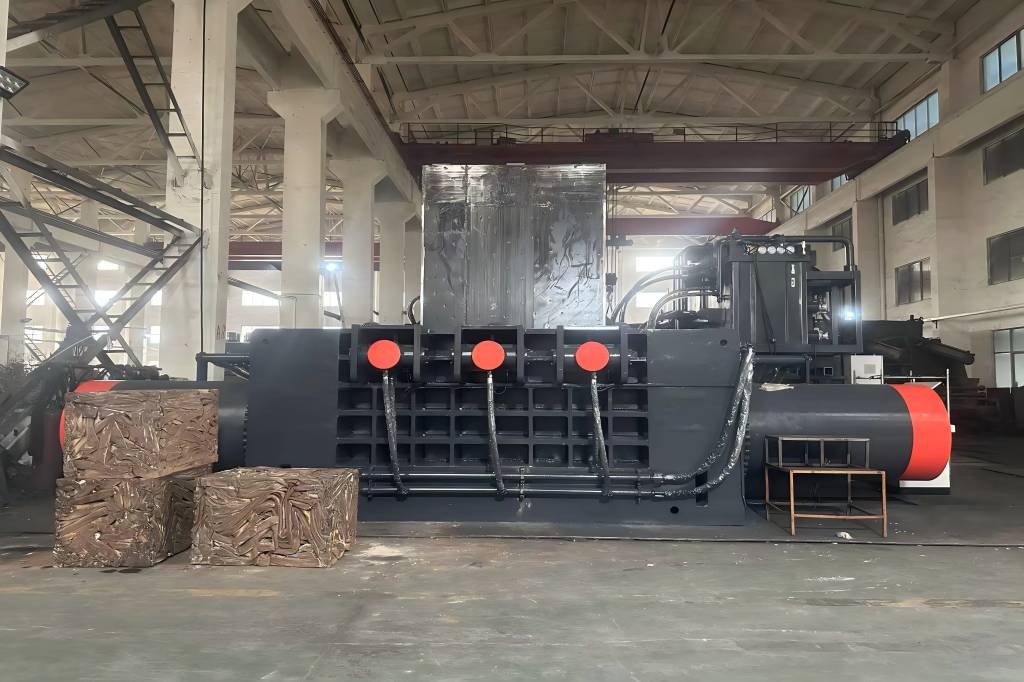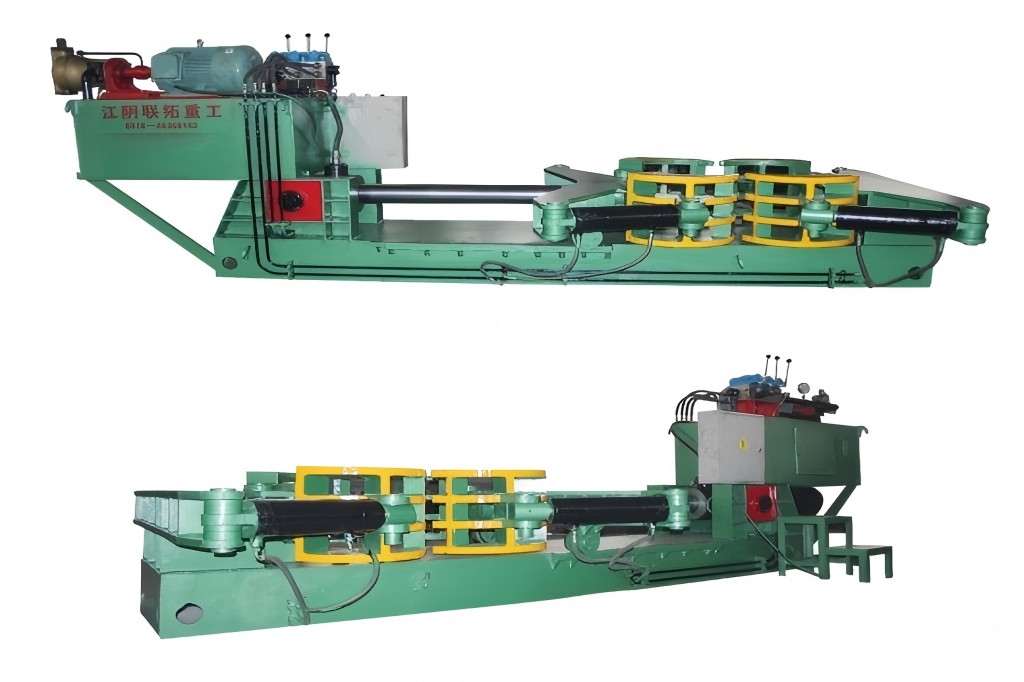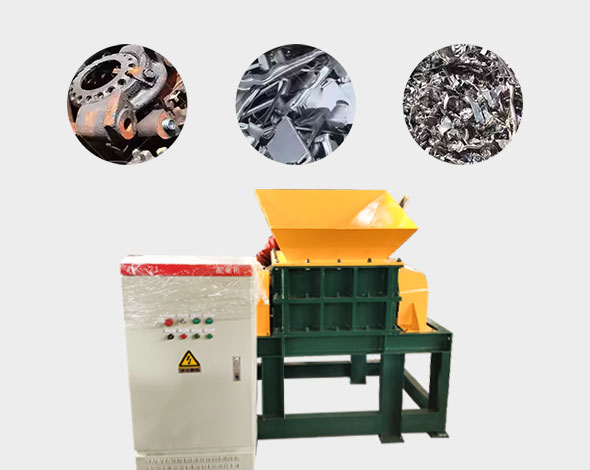Metal balers are vital in recycling, manufacturing, and metalworking, compressing scrap metal into compact bales. For businesses investing in a baler, understanding the cost factors is crucial to ensure they get a machine that meets their needs and offers the best value.
This article explores the various elements that impact the price of metal balers, including type, size, material quality, energy efficiency, brand reputation, customization, shipping, and long-term maintenance.

Types of Metal Balers
The type of metal baler is a primary factor influencing its price. Balers come in a variety of varieties, each intended for a certain use and sector. The most common types include:
- Vertical Balers: Often used by smaller operations or businesses with limited floor space. Compress materials from the top down, making them ideal for smaller volumes of metal waste. Usually more reasonably priced, with prices varying from $5,000 to $20,000 based on features and size. Industries such as retail, small manufacturing, and small-scale recycling often use them for their compact size and lower cost.
- Horizontal Balers: Larger and more expensive, able to handle higher volumes of metal and offer continuous feeding systems. Can cost anywhere from $20,000 to over $200,000, depending on size and level of automation. More common in large recycling centers and manufacturing plants where high throughput is required.
- Closed-Door Balers: Designed to compact high-density materials with increased safety and compaction strength. The sealed chamber allows for stronger compaction, making them ideal for heavy-duty applications such as metal recycling facilities dealing with rigid materials.
- Two-Ram Balers: Use separate hydraulic rams for compression and bale ejection, offering versatility and efficiency. Ideal for operations handling mixed materials or large volumes, suitable for high-volume recycling centers. Can cost between $100,000 and $500,000.
- Single-Ram Balers: Perform both compression and ejection with one hydraulic ram, making them a more economical option for businesses with consistent waste streams. Commonly used for processing specific types of metal and well-suited for operations requiring steady, uniform output.
Size and Capacity of the Baler
A baler’s size and capacity have a big impact on how much it costs since they dictate how much material the machine can process in a certain amount of time. Selecting the right size for your operational needs is crucial for optimizing both productivity and cost-effectiveness.
- Larger Balers: Designed for heavy-duty operations and can process substantial volumes of metal scrap, often handling several tons per hour. Commonly used in large-scale industrial environments, such as automotive manufacturing plants or large recycling centers, where the output of metal waste is continuous and high. The larger the baler, the more powerful its motor and hydraulic system, increasing both the price and energy consumption.
- Mid-Sized Balers: Offer a balanced solution for businesses that handle moderate volumes of scrap metal. Suitable for medium-sized recycling centers, regional scrap yards, or manufacturing plants that generate steady but not overwhelming amounts of metal waste. Can efficiently process a few tons of metal daily and are versatile enough to manage different materials, such as light steel, aluminum, and copper. Provide greater capacity than smaller balers without the significant financial and operational investments of larger units.
- Smaller Balers: Ideal for businesses that produce lower volumes of scrap metal or have limited floor space. Most commonly used in small workshops, retail settings, or small-scale recycling operations. While they have less capacity, they are more affordable and require less energy to operate, making them a cost-effective solution for businesses that do not need to process large amounts of material daily.
Choosing the right size of baler is critical to avoid unnecessary costs. Over-investing in a baler that is too large can lead to excessive energy consumption, while under-investing in a smaller baler may cause inefficiencies and production delays.
Material and Build Quality
A metal baler’s effectiveness and total cost are largely determined by the material and construction quality of the machine. Since metal balers are used in demanding environments, processing heavy-duty materials like steel, aluminum, and copper, must be robust enough to handle continuous operation and extreme pressure.
- Steel Quality and Thickness: Most metal balers are made from high-strength steel, which allows them to handle the significant forces involved in compressing metal scrap. The thickness and grade of the steel used in the baler’s frame, housing, and compression chambers directly affect its durability and lifespan. Balers that are constructed from stronger, thicker steel are more resilient to abrasion, which makes them appropriate for use in challenging environments.
- Corrosion Resistance and Protective Coatings: For industries exposed to moisture, chemicals, or corrosive agents, corrosion resistance is crucial. Corrosion can lead to premature wear, reducing the baler’s lifespan and increasing maintenance costs. Galvanized steel or coated surfaces help prevent rust and corrosion, especially in harsh environments, though these features can increase the initial cost by 10% to 20%.
- Internal Components and Reinforcements: The internal components of the baler, such as the hydraulic system, pistons, and compression plates, also impact the overall build quality and cost. High-end hydraulic systems, reinforced compression plates, and pistons made from durable materials ensure smoother operation and longer lifespans, reducing maintenance needs.
Automation and Features
The degree of automation in a metal baler is a key factor that greatly affects its cost. Automation features can range from simple programmable logic controllers (PLCs) to fully autonomous systems that require little to no human interaction.
- Manual Balers: These machines require more human intervention, which keeps their price lower. They are typically priced between $3,000 and $10,000. However, manual balers are not as efficient as their automated counterparts, and businesses that require high throughput may find them less practical.
- Semi-Automatic Balers: Semi-automatic balers offer some level of automation, such as automatic tying or bale ejection, but still require human input for feeding material. These balers are more expensive, typically costing between $20,000 and $100,000, depending on size and features.
- Fully Automatic Balers: Balers that are fully automated are made to run with the least amount of human intervention. Equipped with sensors, control panels, and programmable settings, these machines offer maximum efficiency and can process metal continuously. Their cost varies between $100,000 and over $500,000, based on the size and added features. These balers are ideal for large-scale recycling facilities where high efficiency and minimal labor are essential.
- Advanced Features: Additional features like touchscreen control panels, remote operation, energy-saving modes, and enhanced safety systems also contribute to the overall cost. While these features add to the initial price, they improve operational efficiency, safety, and energy savings in the long term.
Energy Efficiency and Operational Costs
Energy-efficient balers might come with a higher upfront cost, but they typically offer long-term savings by lowering energy usage.
- Hydraulic Systems: Metal balers rely on powerful hydraulic systems to generate the pressure needed to compress metal. The efficiency of these hydraulic systems directly impacts the energy consumption of the machine. Energy-efficient balers, equipped with variable displacement hydraulic pumps, can reduce energy use by up to 40%, resulting in significant electricity savings over time.
- Motor Efficiency: High-efficiency motors, which reduce energy consumption while maintaining performance, can add to the initial cost of the baler but will result in lower operational costs over time. Energy-efficient balers generally cost between 10% and 20% more than standard models, but the savings on electricity bills can offset the higher upfront price within a few years of operation.
Brand and Manufacturer Reputation
The brand and manufacturer of the metal baler can greatly impact its cost. Established brands with a long history of producing high-quality equipment tend to charge more for their products, but they often offer better reliability, after-sales support, and warranties.
- Well-Known Brands: Reputable brands that are known for their durable and efficient balers typically have higher price points. However, investing in a reliable brand often translates into fewer breakdowns, better customer support, and a longer lifespan for the machine.
- Lesser-Known Brands: While lesser-known brands may offer more affordable options, businesses need to carefully consider the trade-offs in terms of build quality, after-sales service, and reliability. Choosing a cheaper option might lead to increased maintenance and repair expenses over time, so it’s essential to assess the reliability of the brand.
Customization and Add-Ons
Customization can add significantly to the cost of a metal baler. While many balers come in standard configurations, businesses with specific operational needs may require custom features or add-ons, which can increase the overall price.
- Custom Configurations: Adding specialized conveyors for feeding material into the baler or integrating the baler into an existing production line can raise the cost by $10,000 to $50,000.
- Optional Add-Ons: Many balers offer optional features such as enhanced safety systems, automated control panels, and energy-saving technologies. Each of these add-ons can increase the price of the baler by $5,000 to $30,000, depending on the complexity of the feature.
Shipping and Installation Costs
The total cost of purchasing a metal baler is also influenced by shipping and installation expenses.
- Shipping Costs: Shipping a metal baler, especially internationally, can add a significant amount to the purchase price. For larger balers, shipping costs can range from $5,000 to $20,000, depending on the distance and method of transportation.
- Installation and Setup: Professional installation ensures that the machine is set up correctly and that operators are trained on how to use it safely and efficiently. The cost of installation might vary from $2,000 to $10,000, contingent upon the intricacy of the configuration.
Maintenance and After-Sales Support
The long-term cost of owning a metal baler is influenced by maintenance and after-sales support.
- Maintenance Costs: Routine maintenance is essential to ensure the baler operates efficiently. Depending on the type and size of the baler, maintenance costs can range from $1,000 to $10,000 per year. Premium models typically need less frequent maintenance because of their superior build quality and components.
- After-Sales Support: Certain manufacturers provide extended warranties, access to spare parts, and specialized customer support services. While after-sales support adds to the initial cost, it can significantly reduce downtime and repair costs over the machine’s lifespan.
Conclusion
In conclusion, the cost of a metal baler is influenced by a variety of factors, including its size, automation, material quality, energy efficiency, and brand reputation. While the initial investment can range from a few thousand dollars to several hundred thousand dollars, businesses must also consider long-term operational costs, including energy savings, maintenance, and after-sales support.
Businesses are better equipped to make decisions that best meet their long-term objectives and unique operational demands when these aspects are considered.




